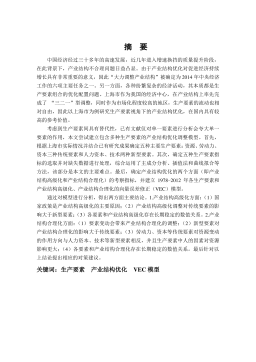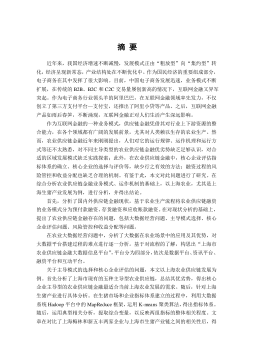眼组织超声回波信号动态滤波器的设计与研究
摘要眼组织回波频谱是设计眼科超声接收滤波器的基本参数。眼是一个不均匀的器官,所以无法用软组织平均声衰减系数对其回波频谱作出准确的估计。本文从声学的角度研究了人眼结构,用10MHz单元超声换能器对人眼在体扫描,观察了回波频谱的变化规律,并在此基础上讨论了眼组织特性的影响。结果表明,球内回波的中心频率的变化很小,眼底3-5m后中心频率随着深度快速下降,平均斜率约为-0.16MHz/mm。在探头通带范围内消除探头和电路的影响后观察组织的频谱特性,发现晶状体后囊频谱比较平坦而眼底组织的频谱有随频率升高的趋势。前者特性接近于高反射率的平面靶,而后者接近于瑞利散射子的特性。根据眼组织随深度变化的频率下降规...
相关推荐
-
我国基层财政困难的制度成因分析与对策研究VIP免费

 2024-09-20 46
2024-09-20 46 -
我国煤电产业链纵向交易合约机制研究VIP免费

 2024-09-20 43
2024-09-20 43 -
生产要素视角下的上海市产业结构优化研究VIP免费

 2025-01-09 8
2025-01-09 8 -
我国银行业结构与经济结构关系研究VIP免费

 2025-01-09 17
2025-01-09 17 -
大数据视角下农业供应链金融研究VIP免费

 2025-01-09 14
2025-01-09 14 -
跨国大型综合超市的规划研究VIP免费

 2025-01-09 9
2025-01-09 9 -
跨境电商农产品质量安全问题研究VIP免费

 2025-01-09 9
2025-01-09 9 -
世界市场的虚拟化与我国国际电子商务发展方向研究VIP免费

 2025-01-09 43
2025-01-09 43 -
中国政府对电力行业的价格规制问题研究VIP免费

 2025-01-09 18
2025-01-09 18 -
中小企业信息化系统集成技术研究VIP免费

 2025-01-09 30
2025-01-09 30
相关内容
-

跨国大型综合超市的规划研究
分类:高等教育资料
时间:2025-01-09
标签:无
格式:PDF
价格:15 积分
-

跨境电商农产品质量安全问题研究
分类:高等教育资料
时间:2025-01-09
标签:无
格式:PDF
价格:15 积分
-

世界市场的虚拟化与我国国际电子商务发展方向研究
分类:高等教育资料
时间:2025-01-09
标签:无
格式:PDF
价格:15 积分
-

中国政府对电力行业的价格规制问题研究
分类:高等教育资料
时间:2025-01-09
标签:无
格式:PDF
价格:15 积分
-

中小企业信息化系统集成技术研究
分类:高等教育资料
时间:2025-01-09
标签:无
格式:PDF
价格:15 积分





